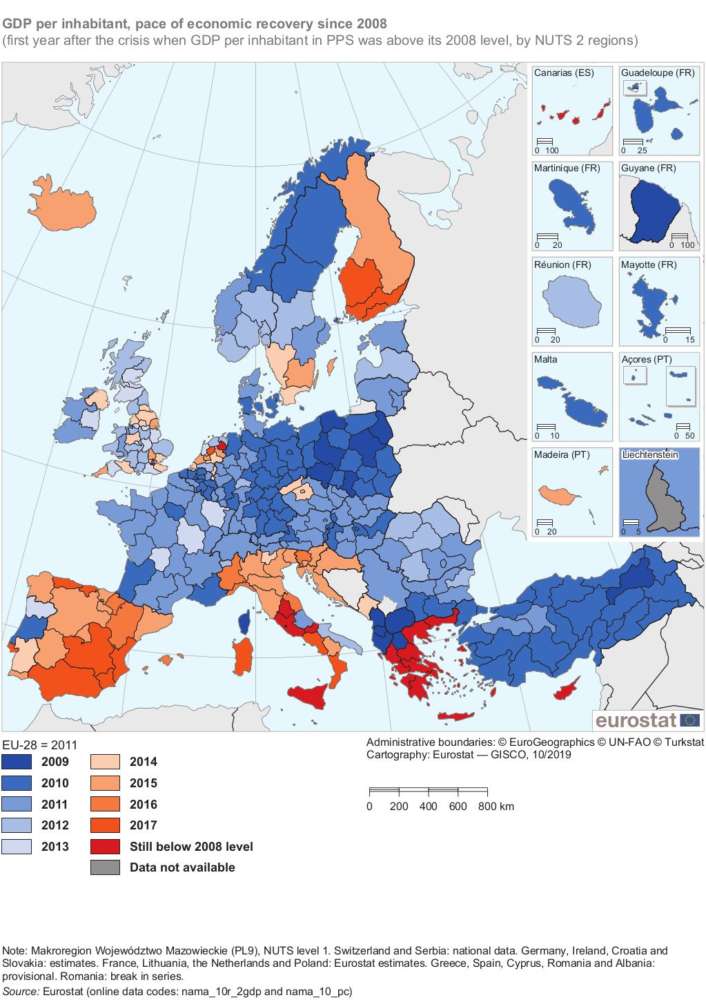GDP per inhabitant in Cyprus is still below levels of 2008 but has been edging up after hitting a low in 2014, according to figures released by Eurostat on Wednesday.
It said that following a peak in 2008, the value of gross domestic product (GDP) per inhabitant in purchasing power standard (PPS) of EU regions generally fell in 2009 because of the crisis. However, GDP per inhabitant has subsequently risen albeit at a varying pace across EU regions as regional economies have recovered.
In the case of Cyprus, GDP per inhabitant stood at €27,500 in 2008 and then fell to €25,800 in 2009, €25,400 in 2010, €25,000 in 2011 and plunged further to €24,100 in 2012, €22,500 and €22,400 as the economic crisis gripped Cyprus.
From there is started a slow recovery, edging up to €23,700 in 2015 and €24,500 in 2016. Provisional figures for 2017 put it at €24,5400.
Eurostat said that in approximately half of 280 EU NUTS level 2 regions, GDP per capita had returned to or rose above its 2008 level within two years. For further 111, GDP per inhabitant remained below its 2008 level for between three and eight years.
More generally, in most regions in the north, west and east of the EU, GDP per inhabitant had stayed above or returned above their 2008 level by 2013 at the latest; with the exceptions of:
- much of Finland and several regions in Sweden among the northern EU Member States;
- several regions in the Netherlands and the United Kingdom among the western Member States;
- all regions of Croatia and Slovenia, and a few regions of Czechia among the eastern Member States.
The main concentration of regions whose GDP per inhabitant was still below its 2008 level by 2014 was in the southern EU Member States of Greece, Spain, Italy, Cyprus and Portugal; with the exceptions of:
- Malta (one region at this level of detail);
- four Italian regions — Valle d’Aosta/Vallée d’Aoste, Abruzzo, Puglia and the Provincia Autonoma di Bolzano/Bozen; and
- three Portuguese regions — Norte, Centro and the Região Autónoma dos Açores.
Bucking the trend
It is worth noting that in 10 regions, GDP per inhabitant rose rather than fell in 2009. Six of these regions were in Poland, two in France (Corsica, Guyane) and one each in Greece (Dytiki Makedonia) and Finland (Åland).
Most of these 10 regions experienced an uninterrupted increase in their GDP per inhabitant despite the crisis. This was the case in Corsica (France) and the six Polish regions. The other three regions — Dytiki Makedonia (Greece), Guyane (France) and Åland (Finland) — recorded a fall one year later. In other words, their GDP per inhabitant peaked in 2009 rather than in 2008.







